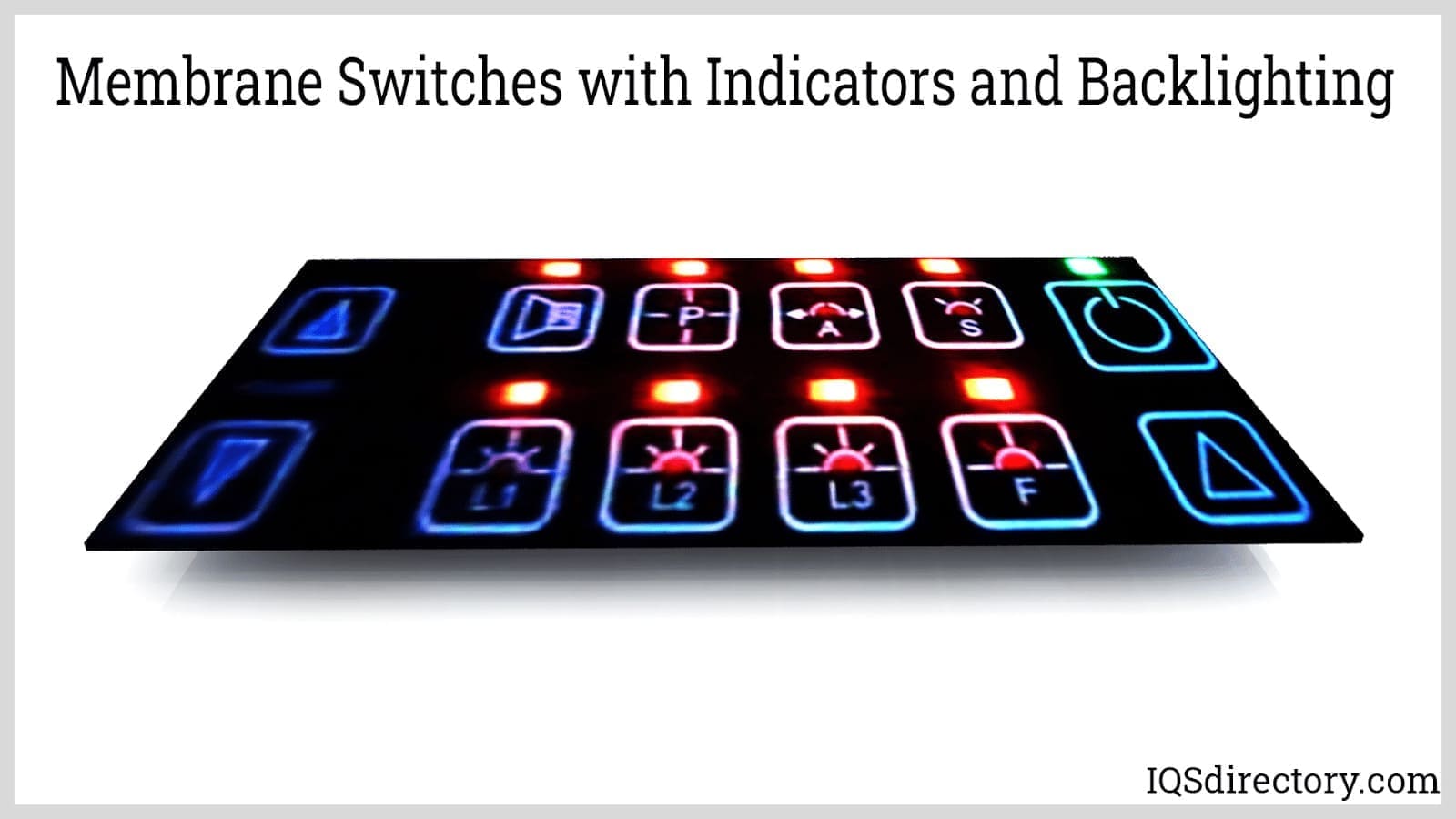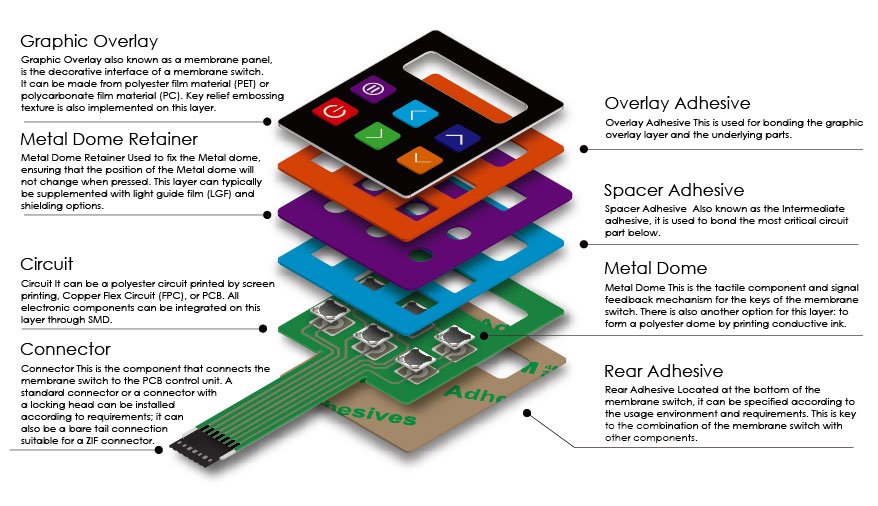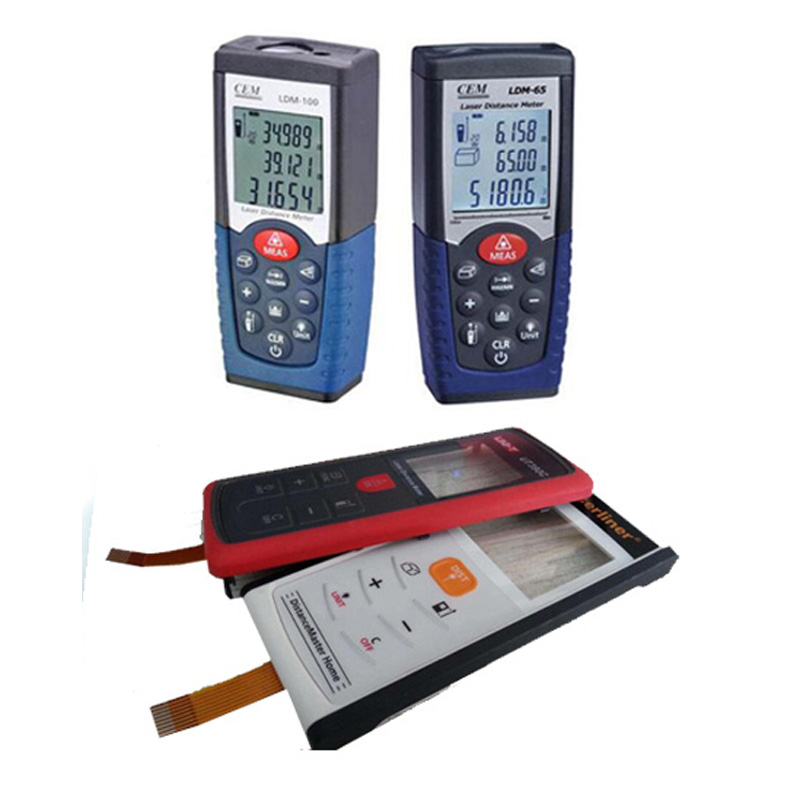The Production Refine Behind Membrane Switch: What You Need to Know
The production process behind membrane layer switches combines mindful style, material option, and quality assurance. It begins with comprehending the details of membrane layer button style and advances through different phases, including material choices and printing techniques. Each stage plays a vital function in guaranteeing performance and resilience. The complexities of layer building and the extensive screening standards may reveal insights that are not immediately evident. What lies beyond these foundational aspects?
Recognizing Membrane Layer Switch Style
Although membrane buttons may show up straightforward at very first look, their design entails complex considerations that assure performance and resilience. The design procedure starts with a complete understanding of individual requirements, including the interface's intended application and ecological variables. Ergonomics is a crucial element, as the layout should help with simplicity of use while guaranteeing that tactile feedback meets customer expectations.Moreover, the layering of parts, such as visuals overlays, glue layers, and conductive traces, need to be exactly engineered. membrane switch. This layered configuration not just affects the switch's responsiveness but also influences its long life. Interest is provided to the sealing techniques used to secure against moisture and dirt, which might jeopardize performance. In addition, layout considerations encompass visual appeals, where color systems and visual clarity boost individual experience. Ultimately, the layout of membrane layer switches equilibriums performance, user experience, and durability, making certain that they satisfy the demands of different applications efficiently
Products Utilized in Membrane Change Manufacturing
When picking materials for membrane layer switch production, it is necessary to contemplate both performance and durability. The key materials consist of polyester and polycarbonate films, which supply flexibility and stamina. These films are commonly coated with sticky to guarantee appropriate bonding to substratums. Conductive inks, usually made up of silver or carbon, are vital for creating electrical links within the switch, permitting reliable operation.Additionally, a protective layer, such as a difficult layer, is frequently related to boost scratch resistance and durability. The selection of backing material, such as acrylic or foam, can significantly influence the switch's tactile feeling and total user experience. Different ecological variables, consisting of temperature and humidity, ought to assist product option to guarantee peak performance in particular applications. Eventually, the ideal mix of products adds to the membrane layer button's functionality and life-span, making educated options crucial for producers.
The Printing Process: Creating Video and Text
The printing process in membrane button production plays a substantial duty in creating high-quality graphics and text. Various visuals layout strategies are used to assure aesthetic allure and capability, while mindful ink option techniques are necessary for longevity and efficiency. Recognizing these aspects is essential for accomplishing best cause membrane button style.
Graphic Style Techniques
Graphic design techniques play an important duty in the printing procedure of membrane buttons, as they define how graphics and message will ultimately show up on the last product. Reliable graphic layout includes the strategic usage of layouts, shades, and fonts to enhance readability and visual allure. Designers often use vector graphics for scalability, ensuring that pictures remain sharp at different dimensions. Furthermore, focus to contrast and positioning is vital, as it influences customer interaction and visual top quality. The consolidation of branding elements, such as logo designs, should be taken care of with like preserve brand name honesty. In general, thoughtful visuals design methods add substantially to the functionality and appearance of membrane layer switches, affecting individual experience and item performance.
Ink Selection Techniques
Picking the appropriate ink is vital for attaining the wanted visual quality and toughness in membrane layer switch production. Different ink types are used, consisting of solvent-based, water-based, and UV-curable inks. Each kind supplies distinct qualities, such as attachment, resistance, and adaptability to environmental factors. Solvent-based inks are commonly favored for their resilience and dynamic colors, while water-based inks are extra ecologically pleasant yet might have restrictions in bond. UV-curable inks supply fast treating and robust performance. Additionally, color matching strategies assure that the picked inks line up with style specs. Ultimately, the choice of ink must take into consideration variables such as application approach, substratum compatibility, and end-use requirements to achieve superior outcomes in membrane layer switch graphics and text.
Layer Building And Construction and Setting Up

Material Selection Process
A careful choice of materials is necessary in the production procedure of membrane layer buttons, as it straight affects capability and resilience. The primary materials used include polyester, polycarbonate, and various conductive inks. Polyester is typically favored for its outstanding resistance to chemicals and abrasion, making it appropriate for extreme atmospheres. Polycarbonate, on the various other hand, supplies remarkable clearness and effect resistance, which is helpful for applications needing exposure and toughness. Conductive inks, usually composed of silver or carbon, are important visit this site right here for creating dependable electric paths. Furthermore, the option of adhesive materials influences the total stability of the switch - membrane switch. Evaluating factors such as ecological direct exposure, tactile feedback, and visual demands guides manufacturers in picking the most effective materials for their specific applications
Layer Attachment Methods
Adhering layers in membrane layer button building is a vital procedure that ensures functionality and long life. Different adhesion methods are employed to safeguard suitable bonding between layers, which commonly consist of using adhesives, warmth, and pressure. Pressure-sensitive adhesives (PSAs) are generally used for their ease of application and instant bonding capabilities. In addition, thermal bonding techniques can be used, where heat is made use of to activate glue buildings, protecting a strong bond. The selection of browse around here bond approach greatly depends upon the products involved and the details application demands of the membrane switch. Correct alignment and consistent application of adhesives are necessary to stop defects, protecting the button operates successfully throughout its desired lifespan.
High Quality Control Measures
Ensuring quality assurance throughout the layer construction and assembly of membrane buttons is essential for preserving efficiency and integrity. This procedure usually entails numerous crucial procedures, consisting of thorough evaluations at each stage of manufacturing. Suppliers utilize advanced testing techniques, such as peel tests and bond evaluations, to validate the honesty of layer bonds. In addition, aesthetic inspections are conducted to identify any type of problems in printing or material variances. Ecological problems, such as temperature level and moisture, are very carefully kept an eye on to assure excellent healing and attachment. Normal calibration of tools assists preserve accurate manufacturing standards. By implementing these quality control actions, suppliers can substantially minimize the danger of product failure, assuring that the last membrane switches fulfill the browse around here needed specs and customer assumptions.
Checking and Quality Assurance Measures

Innovations in Membrane Layer Change Technology
As innovations in modern technology remain to evolve, membrane layer switches are taking advantage of ingenious developments that boost their performance and user experience. One remarkable development is the integration of capacitive touch modern technology, which permits even more responsive and instinctive interface. This change not only boosts looks but additionally decreases mechanical damage, extending the life-span of the switches.Additionally, developments in visuals overlay materials have brought about enhanced durability and resistance to environmental variables such as moisture and UV light. These products currently provide improved quality and brightness, additional boosting the visual appeal.Furthermore, the consolidation of clever technology is changing membrane layer switches into interactive control board, making it possible for connectivity with IoT gadgets. This connection cultivates a seamless individual experience, leading the way for applications in various markets, from healthcare to consumer electronic devices. Jointly, these innovations setting membrane layer switches over as critical parts in modern device design.
Often Asked Concerns
The length of time Does the Membrane Layer Switch Manufacturing Process Take?
The duration of the membrane switch manufacturing process can vary significantly. Aspects such as intricacy, products utilized, and manufacturing quantity impact timelines, with normal manufacturing varying from a couple of days to a number of weeks for conclusion.
What Are the Typical Applications for Membrane Switches?
Membrane switches are typically utilized in various industries, including automotive controls, household appliances, clinical tools, and customer electronic devices (membrane switch). Their adaptability and toughness make them suitable for applications calling for easy to use interfaces and reputable performance in diverse settings
Can Membrane Layer Changes Be Customized for Specific Demands?

What Is the Life expectancy of a Normal Membrane Layer Switch Over?
The lifespan of a common membrane layer button differs, yet usually, it ranges from 1 to 5 million cycles. Factors such as usage, environment, and material high quality considerably affect toughness and total efficiency with time.

Are Membrane Layer Switches Over Eco Pleasant?
The environmental friendliness of membrane layer switches differs. Some products used might not be recyclable, while others can be environmentally friendly. The total effect depends upon producing techniques and products, demanding careful consideration throughout selection and disposal. The manufacturing process behind membrane layer changes combines mindful design, material option, and high quality control. It begins with comprehending the ins and outs of membrane switch design and proceeds through different stages, consisting of product options and printing strategies. When picking products for membrane switch production, it is crucial to ponder both performance and sturdiness. A mindful option of materials is crucial in the production process of membrane buttons, as it straight influences functionality and resilience. The choice of bond method mainly depends on the materials entailed and the details application requirements of the membrane button.